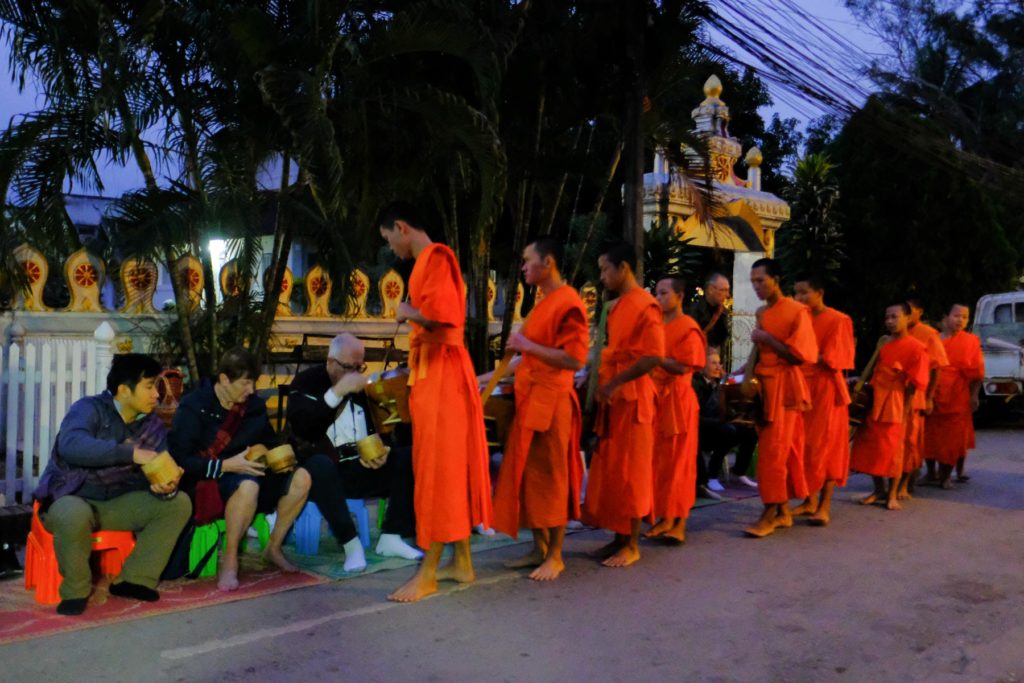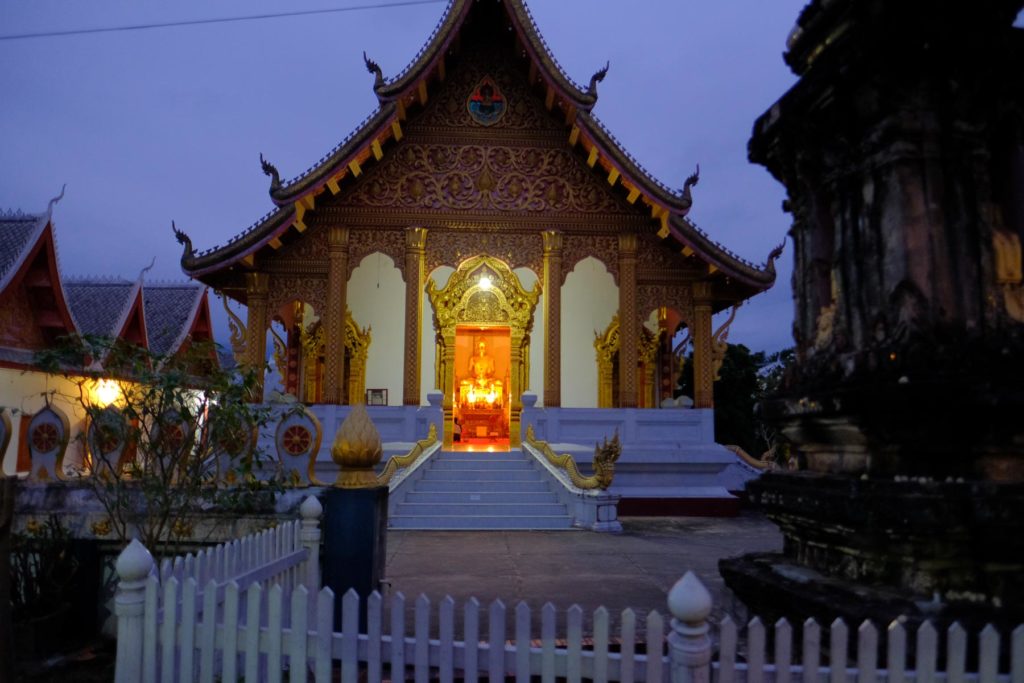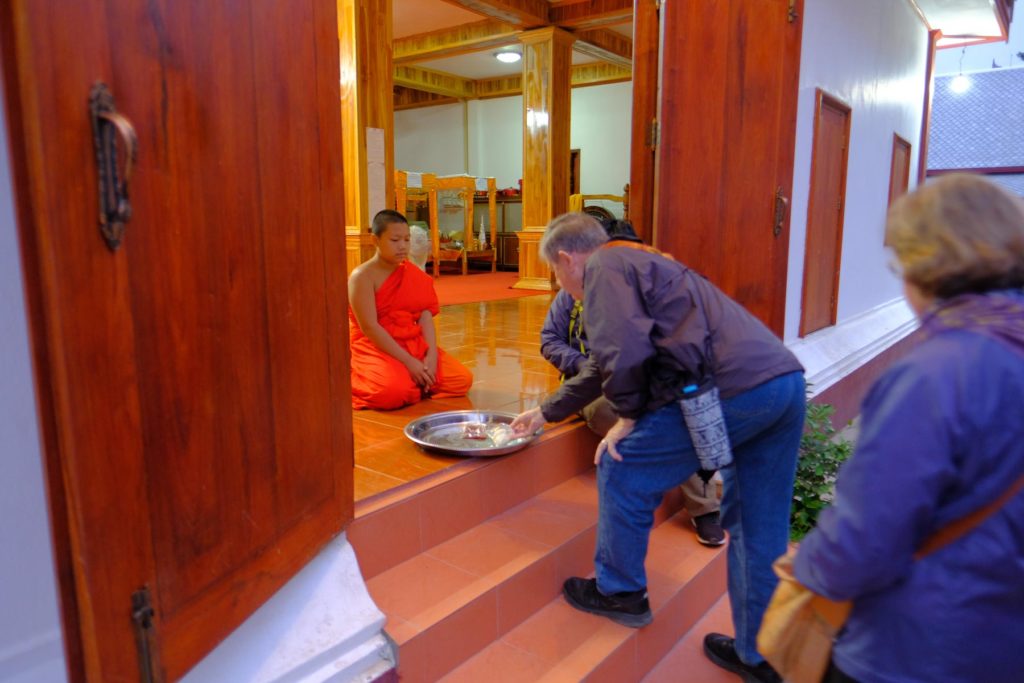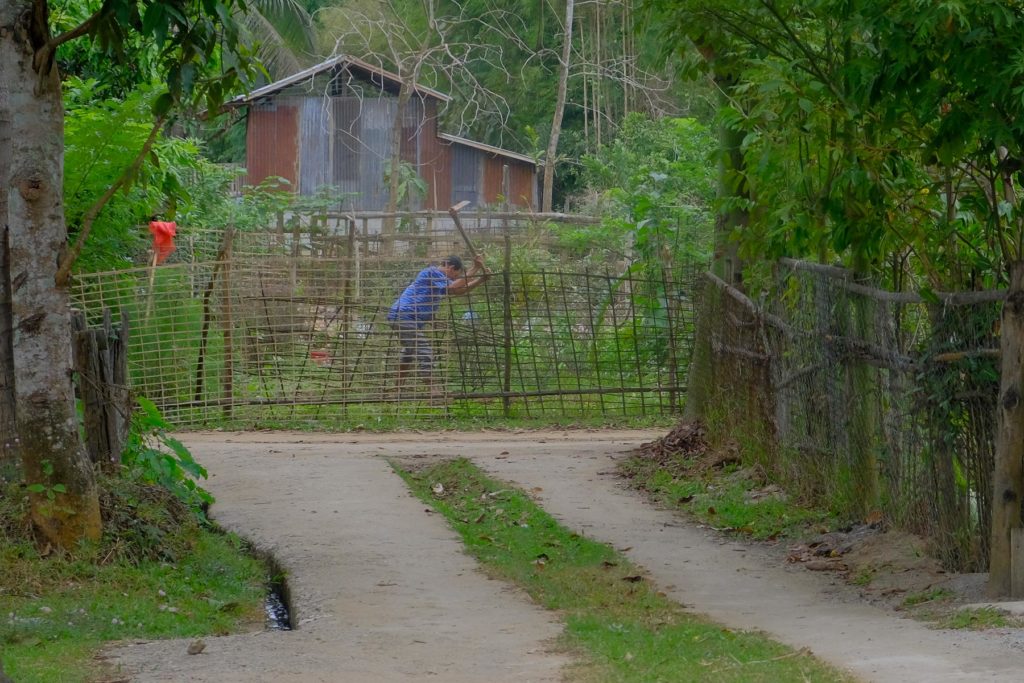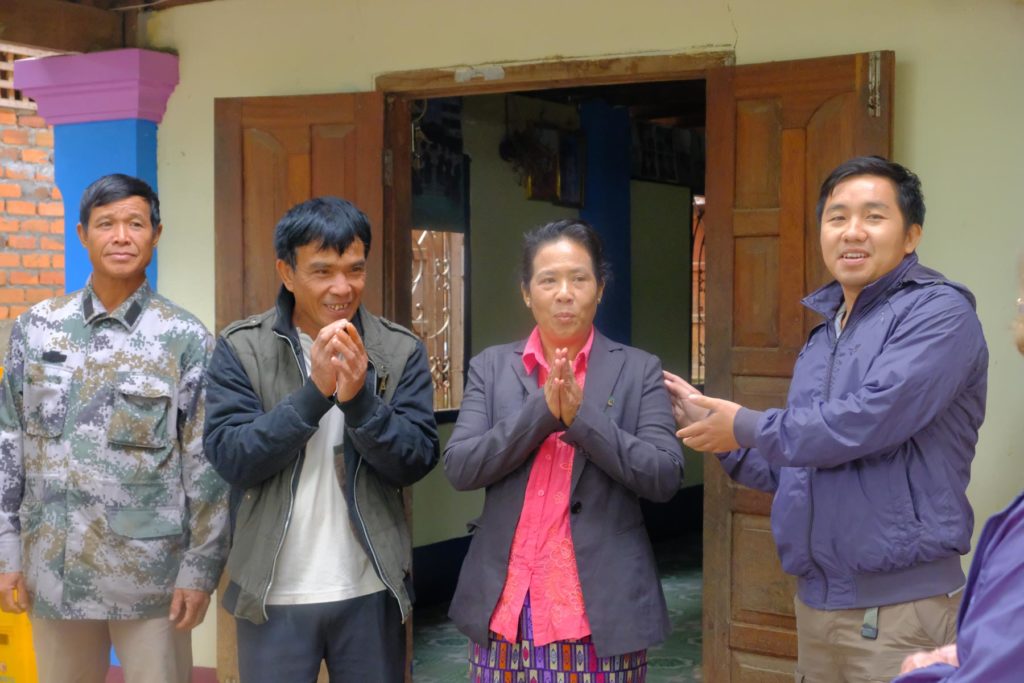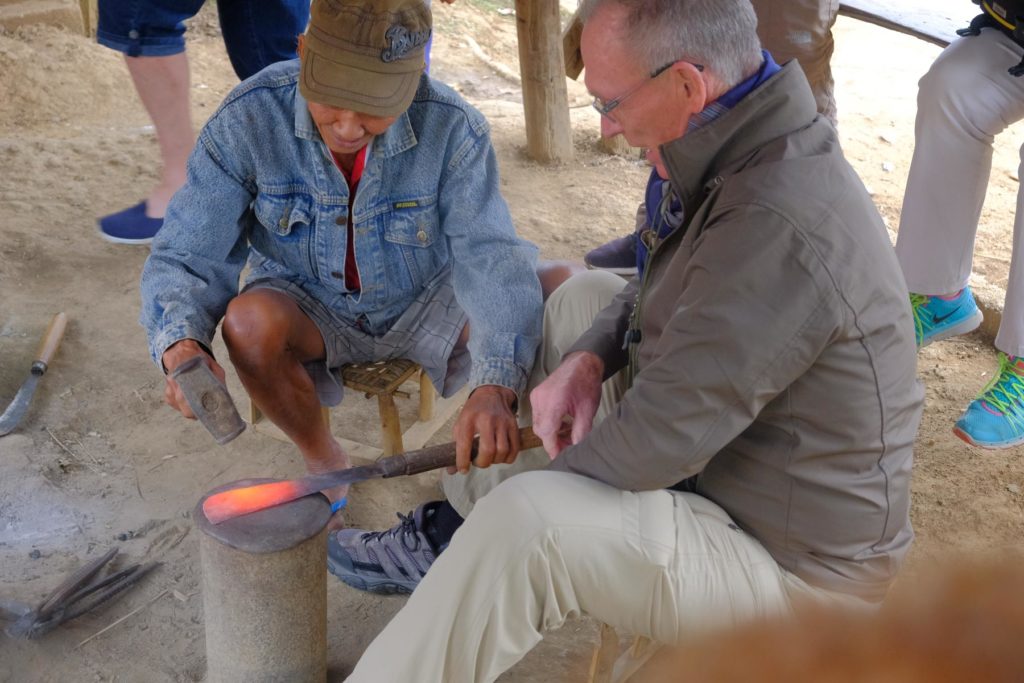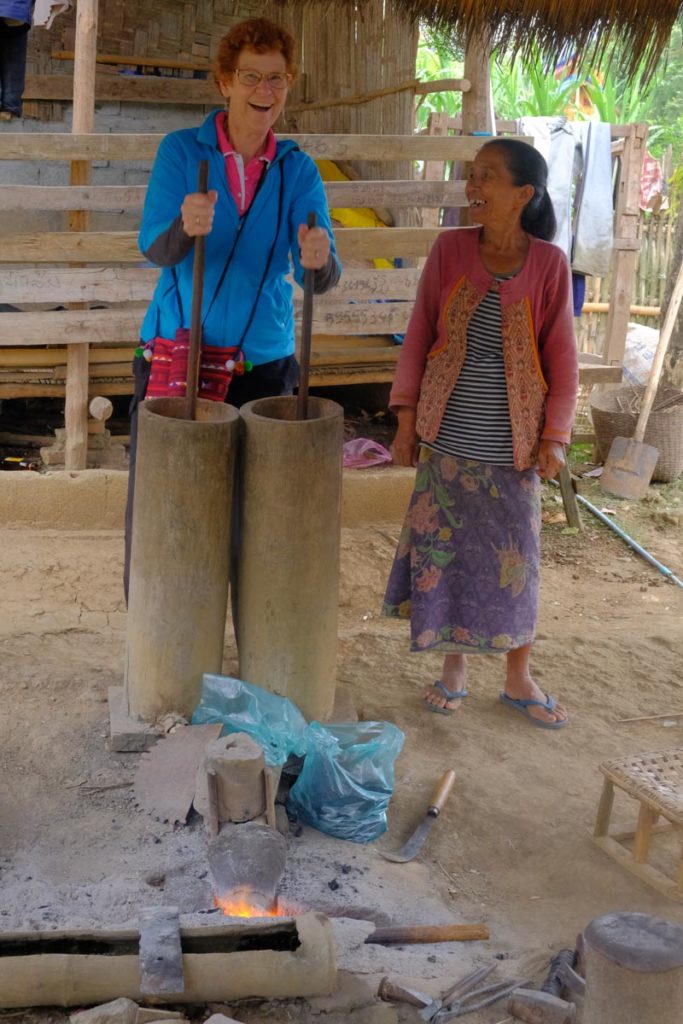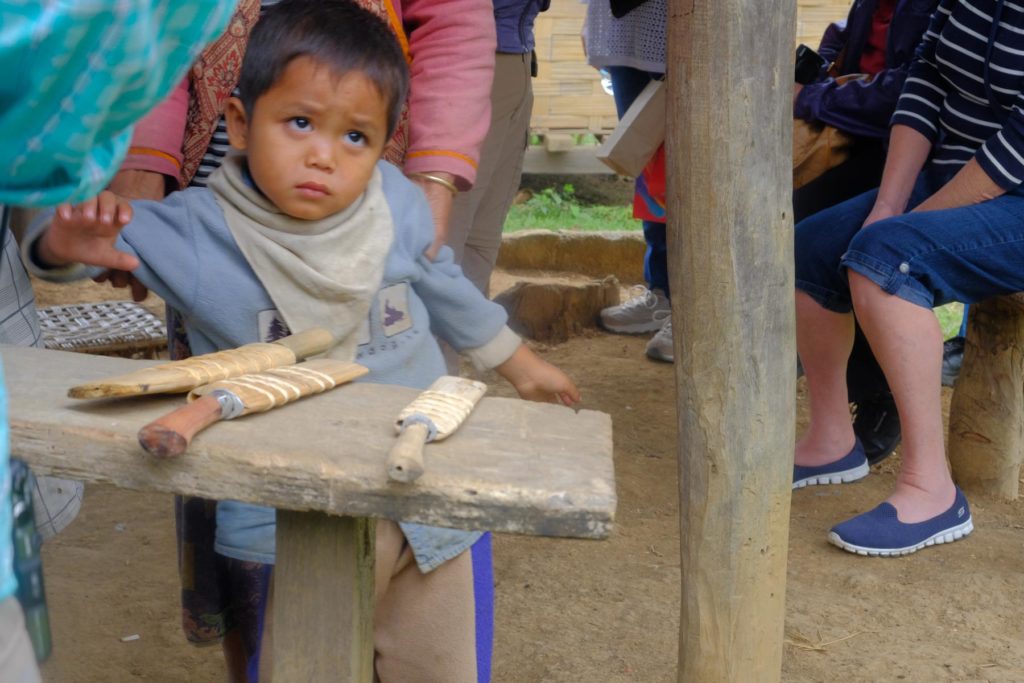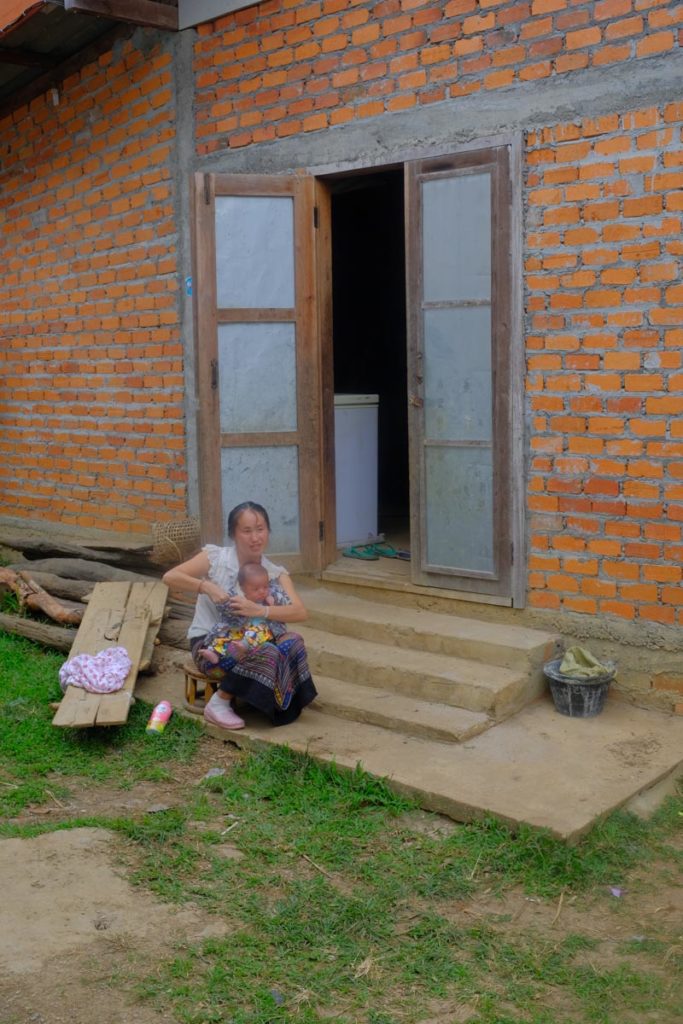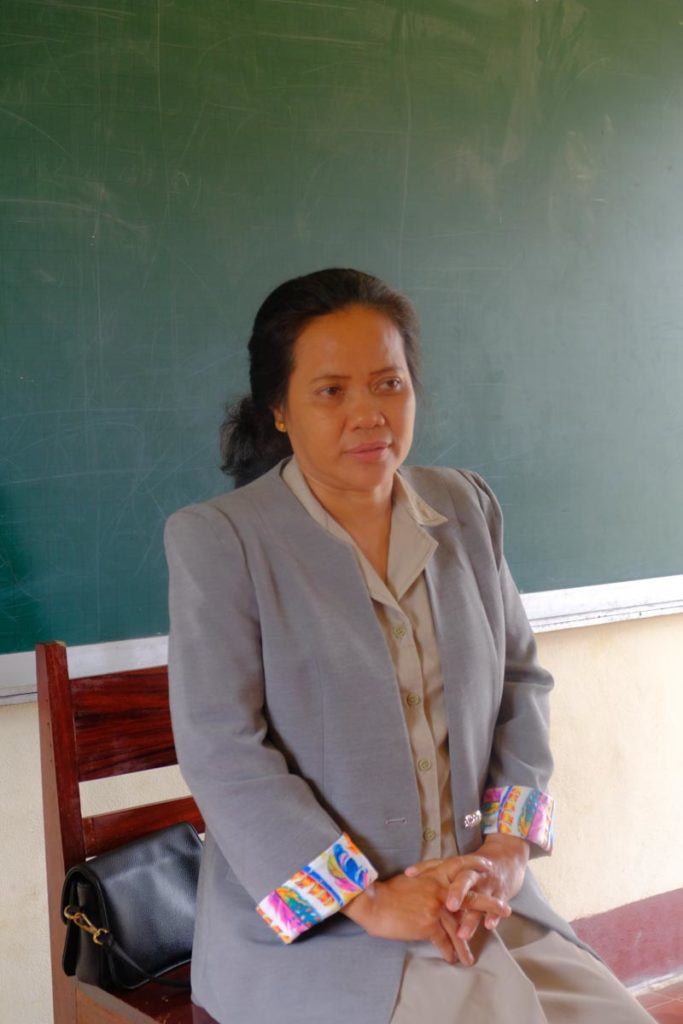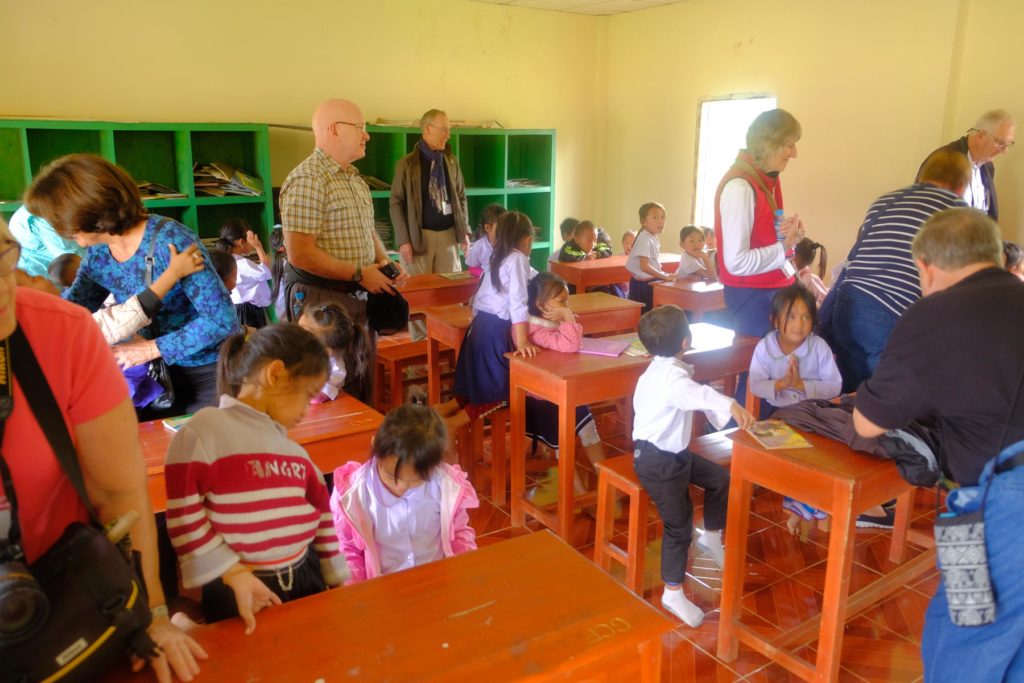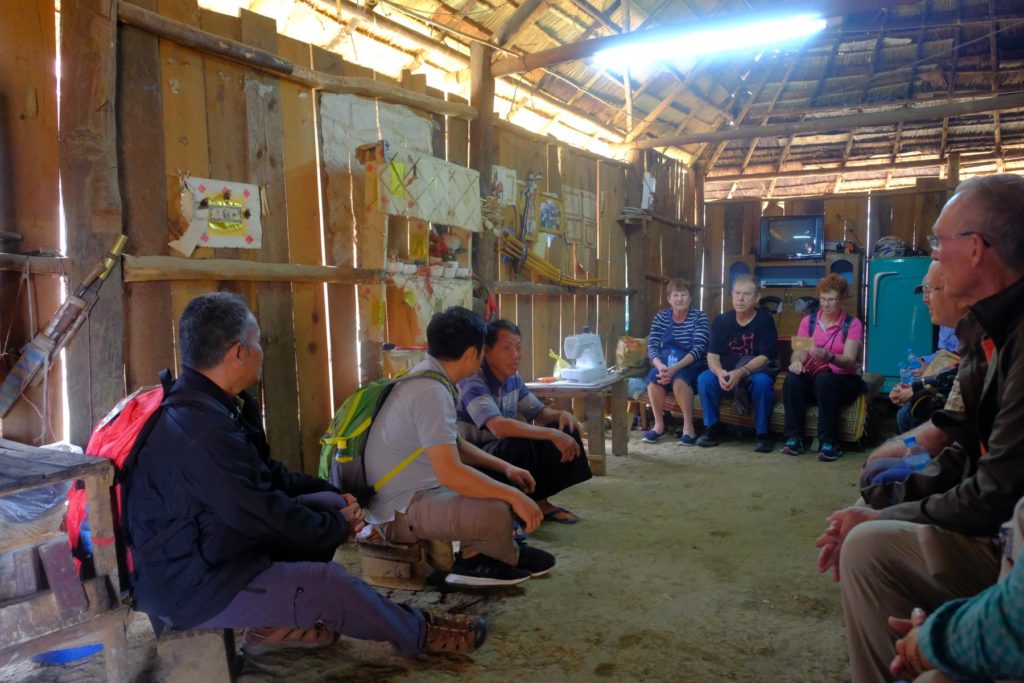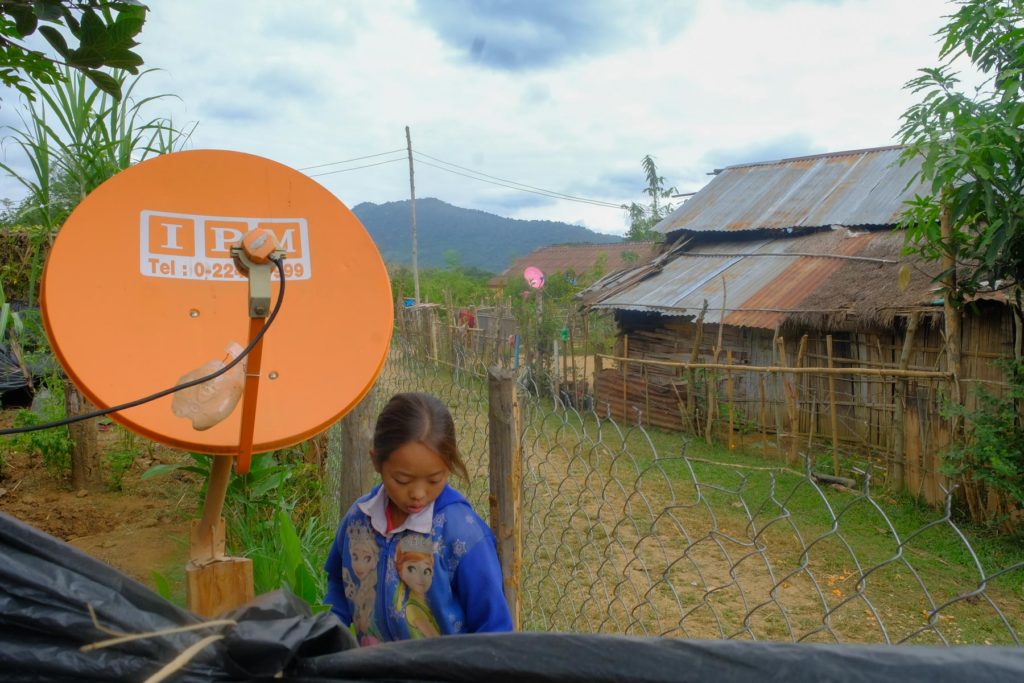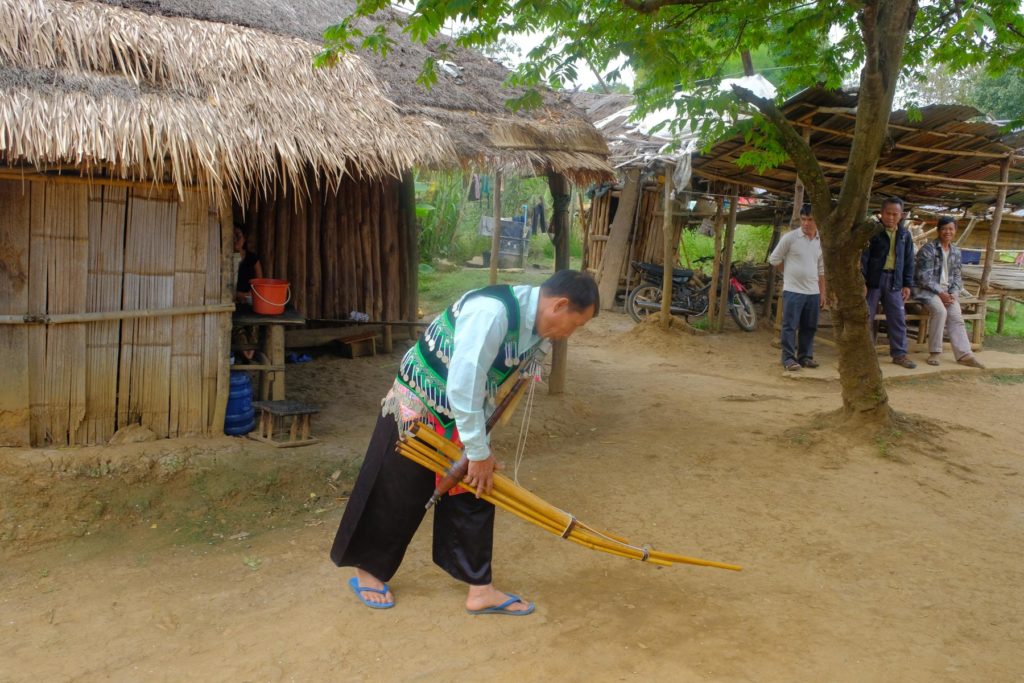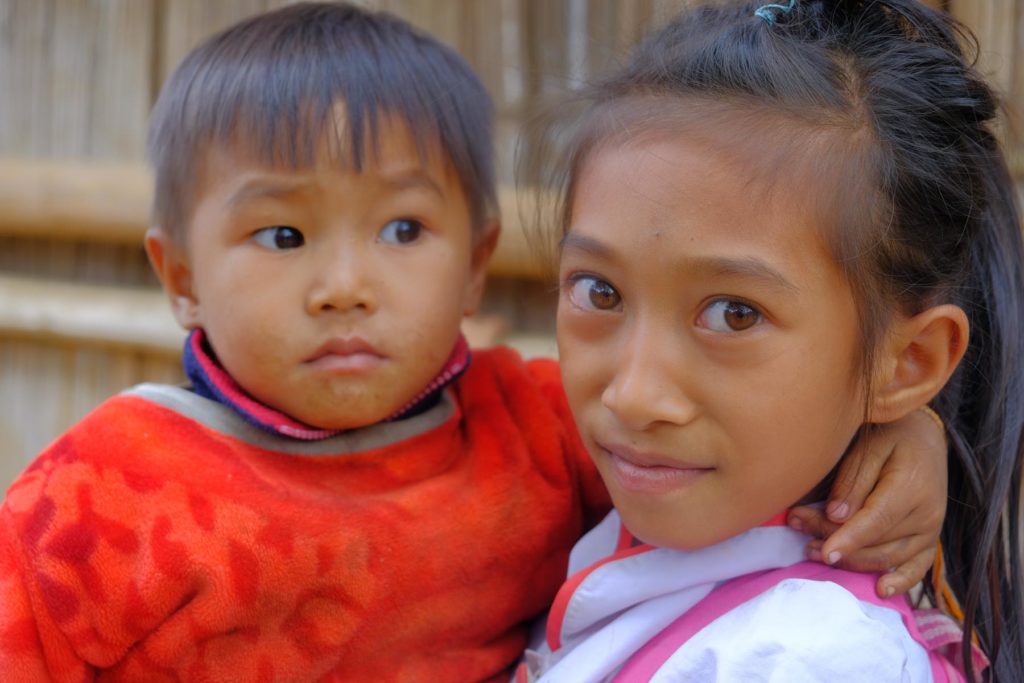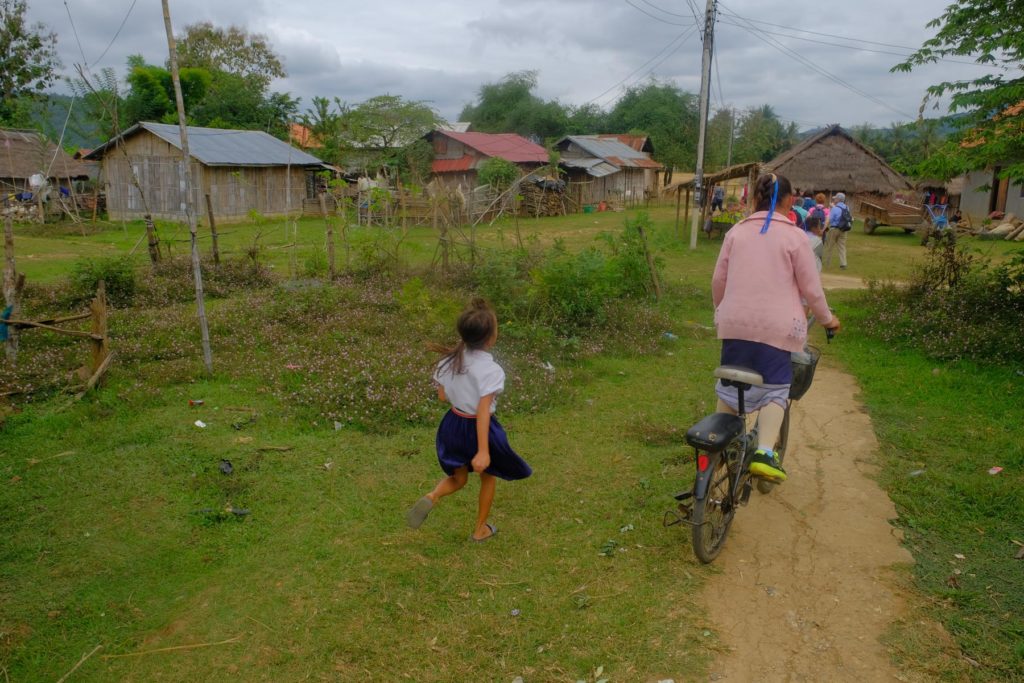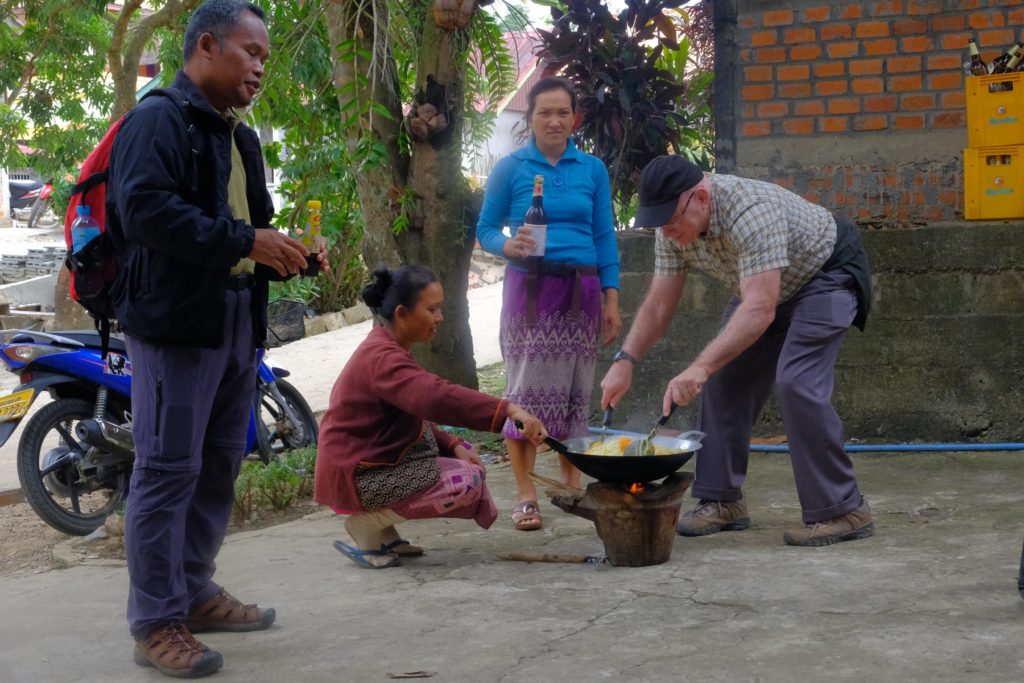This is the day Overseas Adventure Travel shows us a glimpse of what life in Luang Prabang province is like. OAT’s parent established the Grand Circle Foundation to funnel money to towns and villages throughout the world. Every OAT trip includes a Day in the Life opportunity to see what goes on in a village and while highly instructive and illuminating it is hard to say that the village is “typical” because most Laotian villages haven’t received the aide this one has.
But first, life in the day of a Buddhist monk. The wake-up call came at 5 AM and the Jumbos left for the temple at 5:30. Dawn came sometime after six.
Every morning since the 16th century monks (senior monks and novice monks) parade through the streets of Luang Prabang carrying their alms bowls. City residents (and the occasional tourist) place a pinch of sticky rice in each monks bowl. Later we presented small packets of other foodstuffs. The monks return the gifts with a blessing for the giver and his or her family. In this way the 100 or more monks receive food for their two meals per day. Monks do not eat after noon.
We stopped for a Laotian breakfast, which were a coffee with sweetened condensed milk and a kind of donut. The coffee was strong but Judy found it very tasty with the sweetened condensed milk.
After the group went to a local market to watch local people purchase food for their meals. Group members were assigned the task of finding and purchasing a specific item for our noontime meal. We needed to ask for it in their language and ask for the amount we needed. We had no idea what it was we were looking for until we got hints from the vendors.
After breakfast and an hour’s rest we were back in the bus for a 45-minute ride for our village visit. The terrain here is mountainous and the road twisty and up and down. We passed through suburban Luang Prabang and a continual stream of other small villages before reaching ours.
The village says a lot about current Lao government. Remember, as a Communist country the government feels a responsibility to provide for its citizens. The problem the government faces is this: Many Laotians belong to a variety of ethnic groups, speak different languages, practice different religions and many live in small (10 family or less) communities far from schools and health clinics. None have electricity or running water. Serving residents of Luang Prabang is easy; that’s the low-hanging fruit. Serving the other 20% is a challenge.
The government’s solution was simple: relocate villages to more centralized locations; provide water, electricity, schools and health care. Problem solved!
Except of course those “served” may not like pulling up stakes to move to who-knows-where. The community we visited of 800 or so is made up of people from three different villages and three different ethnic groups: Lao, Kmsou, and Hmong. Yes, the same Hmong who have settled in many U.S. cities. At the end of the Vietnam War those who supported the “secret war of the CIA) were in big trouble. Those rounded up and sent to “reeducation camps” were often “disappeared.” Many, including the Hmong, went to refugee camps and sanctuaries in Thailand and the U.S.
The town’s leader and one of his two assistants, both Laos, greeted us. The “mayor” is elected from a slate of eight candidates, the candidates having been selected by the Central Committee in Luang Prabang. The winner is mayor for five years; the two runners-up are his assistants. The mayor makes major decisions and can act as the justice of the peace. The town was formed in 1995. The same process is being used to settle those communities displaced by the dam projects we learned about yesterday.
The mayor took us through the village on the way to the primary school (grades one and two). On the way we stopped to watch the village blacksmith ply his trade making farming implements and knives for the villagers (and the occasional tourist who might wander through).
At the school we met the teacher – one teacher for both grades, about 30 kids in all. Her biggest challenge is that many students at this level speak no Lao at all. It takes six weeks or more before they become functional in the language. Her strategy is to pair students who speak the same language: second graders with first graders. The older kids who know a little teach those who don’t know anything. She visits the home to encourage parents to use Lao at home.
The main subjects are Lao language, math and social studies plus all the other typical primary subjects: music, art, etc. Bad kids {“Monkeys,” she called them) are punished by being locked in the classroom and not allowed to go home for the noon meal. She has taught for 25 years, two at this school.
Then the kids came in; they know the drill. Usually in pairs they ran to the back of the room, grabbed a book or two and made themselves comfortable sitting between two “white” people. They tried to teach me the Lao words for each animal in our book. The kid next to me gave up and said “Meow” for a cat. He knows a hopeless old man when he sees one.
After 15 minutes or so of bedlam (the class had more than its share of monkeys) we said “Bye” and went to the home of a Hmong family. They came from a village near the Plain of Jars, an area eight hours by bus from Luang Prabang. “Jars” refers to ancient structures left on a plain, exact purpose unknown. The Plain of Jars had the bad misfortune of being near the Ho Chi Minh trail and this received a steady bombardment by U.S. B52s. One reason he was glad to leave his home was that the area is full of unexploded ordinances, which today still maim and kill people on a regular basis.
I asked him whether he liked living here or would rather be back home. He said that back home there was no running water, electricity, school, health care or Internet (there’s a cell tower not 100 yards from his front door). But he said that he loves nature and the outdoors. Back home he had a large tract of land, raised cattle for sale whereas here he has only a small plot of land to raise crops and chickens for his family.
The thing of it is, if it weren’t for Grand Circle Foundation running water would not be available at individual houses. GCF installed restrooms for the school and the community. They fixed up the school building and put a fence around it to keep the water buffalo out. Cow pies on the playground are thus eliminated. So, as the case with the dam resettlement plans, execution doesn’t match commitments.
It was lunchtime and the mayor’s wife helped us stir fry the ingredients purchased earlier into a Laotian-style appetizer. We moved to the mayor’s ground floor living room (it has a TV but little else for furniture where the wife served a lunch of kale soup, sticky rise, steamed rice and steamed pork. Desert was a banana.
Then back on the bus to the hotel for an afternoon of leisure.
The evening meal was “on us” and we took the chicken way out, returning to the bakery we ate at yesterday noontime. Sandwiches, wraps, pizza. Close your eyes and you’ll think you’re back in North America. Someone told us JoMo is owned by a Canadian. It’s smart marketing: open a western restaurant in the top tourist destination in Laos and give the poor suffering tourists a break from Lao food.
In fact, this whole Unesco World Heritage Site business bothers me. Yes, it encourages retention of original cultural buildings so people can see what things looked like back when. But here and in other sites that means tourists and tourists mean shops, restaurants, etc. that appeal to tourists.
So off to bed. Tomorrow it’s off to the capital of Laos, Vientine.

